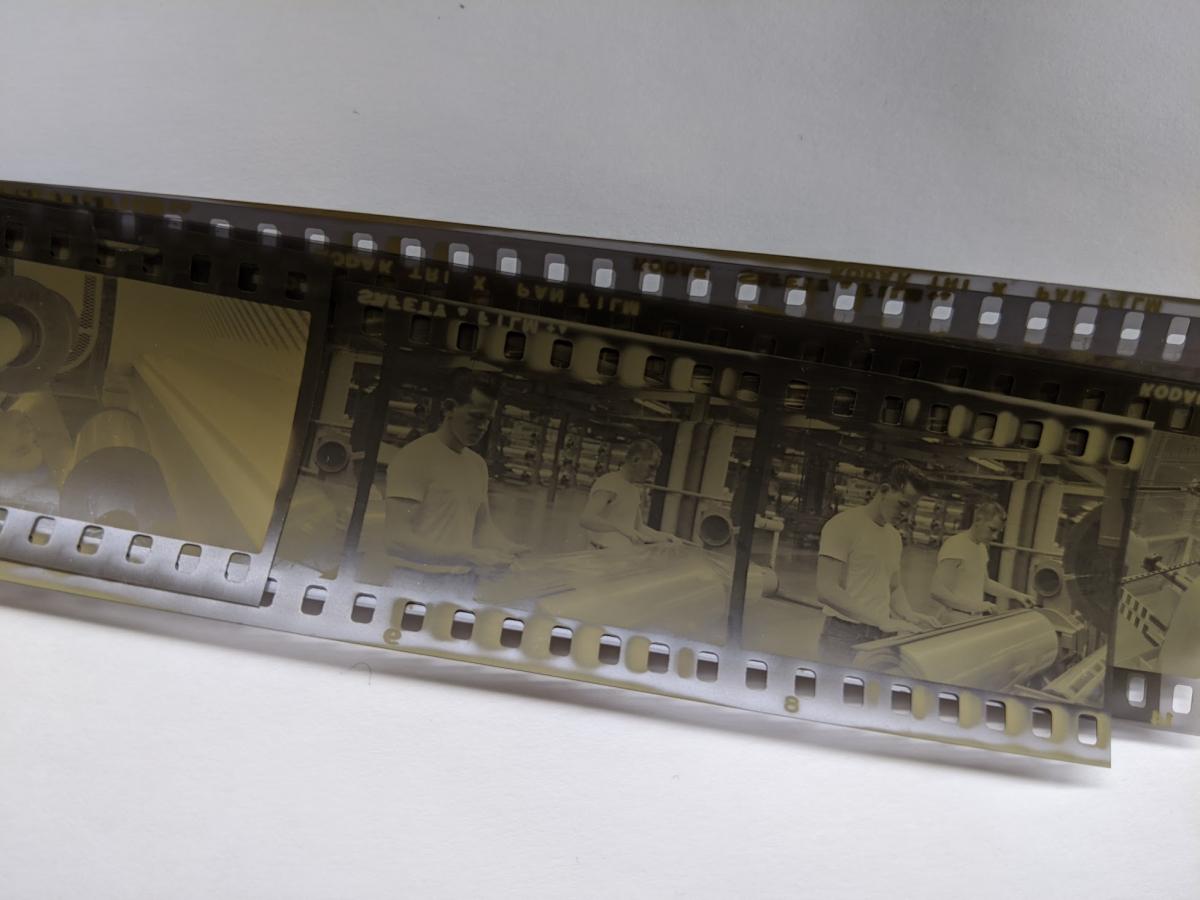
A few months ago, I was presented with a 35mm film negative with an atypical yellow color. When I looked at it, I thought “That’s a mercury intensified negative”. A little later, I reconsidered: What do I really know about this process? I have experience in darkroom photography, but I only know this method from passing references.
One of the wonderful things about working in a research library is the wealth of information available. When faced with an unusual item, I look to the Hagley catalog for references about materials, manufacture, and production methods. These factors influence preservation choices for the item. Hagley has an amazing collection of trade literature and catalogs and they yield valuable information about all kinds of products and trade practices from cellophane to embalming chemicals. Many but by no means all of these catalogs and other resources are available on the Hagley Digital Archives.
Like other institutions, Hagley closed in March because of the coronavirus pandemic. That limited access to physical library resources. When I started to research the lemony negative, I was limited to online resources. But wait, there was something else! I have a personal library including references on photographic materials. It was here that I found additional intensification information.
Intensification is a post-development process performed on black and white (silver) photographic images. It may be used to improve the printability of film and glass plate negatives incorrectly exposed in the camera. Underexposure of negatives results in poor shadow detail and an overall flat, low contrast image. The low light sensitivity of 19th-century glass plate negatives is one reason that intensification processes are frequently described in the photographic journals of the time. Intensification processes add density by depositing additional material (metals) onto the silver image areas. Various chemicals were used, from lead compounds to salts of lead, mercury, chromium, and uranium. These are all quite toxic!
Intensification was also performed on autochromes, early color images on glass. Unfortunately, it could produce brown stains on the colored areas. Lumiere, the maker of Autochrome Lumiere plates, recommended a potassium permanganate solution for stain removal. The extended time in liquid solutions could also cause partial detachment of the gelatin from the glass support seen as “frilling” along the edges.
How might intensification impact the permanency of negatives? This was addressed in 1915 in The Bulletin of Photography. Intensification using mercuric chloride was not the problem, but rather a lack of proper washing and clearing of fixer during the original processing that led to discoloration or fading. (The fixer being the chemical that removes remaining unexposed light-sensitive silver halides.) If not properly removed, the fixer would form mercuric sulfide and other permanent compounds. Wetting the negative before intensification was also important, to diffuse the subsequent chemicals into the gelatin. Lack of appropriate water rinses between steps could also cause chemical interactions and leave stains. Any fingerprints on the negative could become more prominent during intensification.
The image material resulting from the mercuric chloride process was a silver-mercury amalgam. If the negative did not have the desired density it was possible to repeat the intensification process, which deposited more mercury atoms. Some of this extra mercury is more likely to be in the liquid form and may evaporate.
Different intensification chemicals would produce negatives with different colors and tones, including blue-black, yellow, orange, buff, or even pink. Early 19th century references mention the use of calomel for intensification. This yellowish mercury chloride compound was used well into the 20th century to treat malaria and worms until it was acknowledged to cause brain and nervous system damage. Today’s digital photographers should be glad that they are more likely to suffer from carpal tunnel syndrome than chemical poisoning!
Wilson's Photographic Magazine, Volume 59. Intensifying Autochromes. pg. 37
Wilson's Photographic Magazine, Volume 57. Intensification by Mercuric Chloride and Ferrous Oxalate. pg. 74, 156
Morgan, Willard editor. The Complete Photographer. Issue 33. Intensification by Robert Taft. National Educational Alliance. 1941
The Bulletin of Photography edited by Chambers and Bartlett. Vol 16. 1915
Kodak Creative Darkroom Techniques. 1973
Laura Wahl is the Library Conservator at Hagley Museum and Library.
